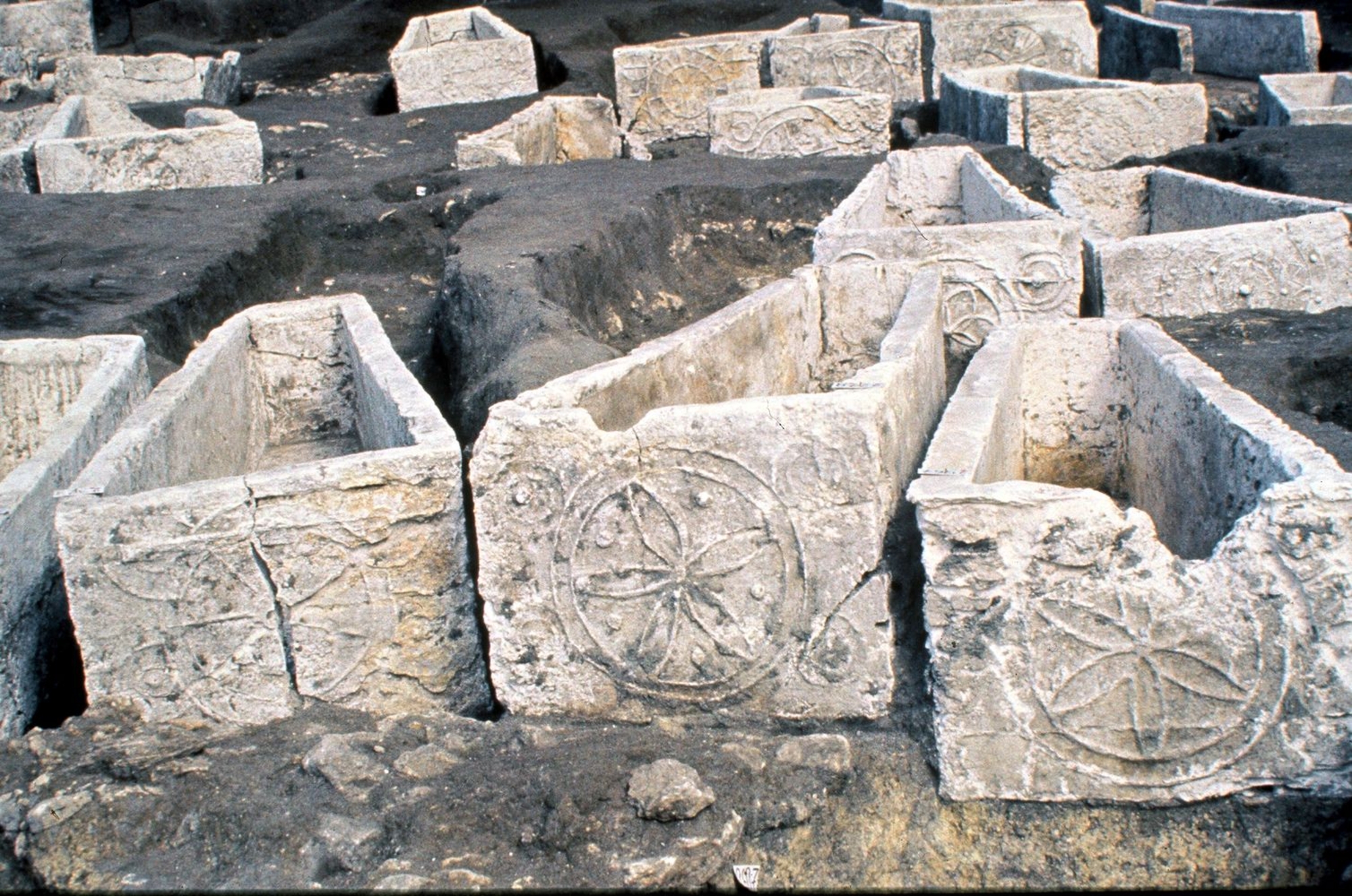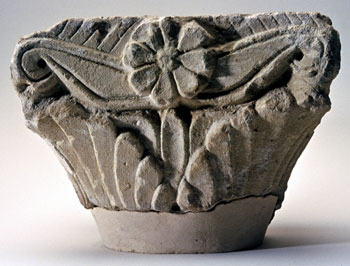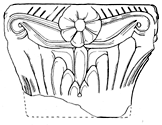- Home
- The town and the abbey
- The site from its origins
- The necropolis, city of the dead
- A Merovingian acanthus-leaf capital
Limestone acanthus-leaf capital, 7th century.
© UASD / J. Mangin.
Drawing of a Limestone acanthus-leaf capital. © UASD / J.-Ph. Marie.
The four faces of this capital are decorated with a crown of acanthus leaves. The leaves are carved beneath each of the four angles and worked out in flat relief. They are applied to the capital's "basket", which is covered with thin, slightly concave strips. The volutes are topped with a curved abacus decorated with oblique grooves. An eight-petaled floret adorns the central section.
Around 800, this capital was re-used in the foundations of the Carolingian palace, the construction of which meant that the funerary galleries of the monumental complex had to partially dismantled. We may imagine that this capital, plucked from the rubble, was originally part of the gallery, which was built in the seventh century.
According to a description of the basilica from 799, the monastery contained a total of 245 marble columns, including 90 in the basilica, 103 in the basilica's external porticos, and 52 in the monastery's other churches.


